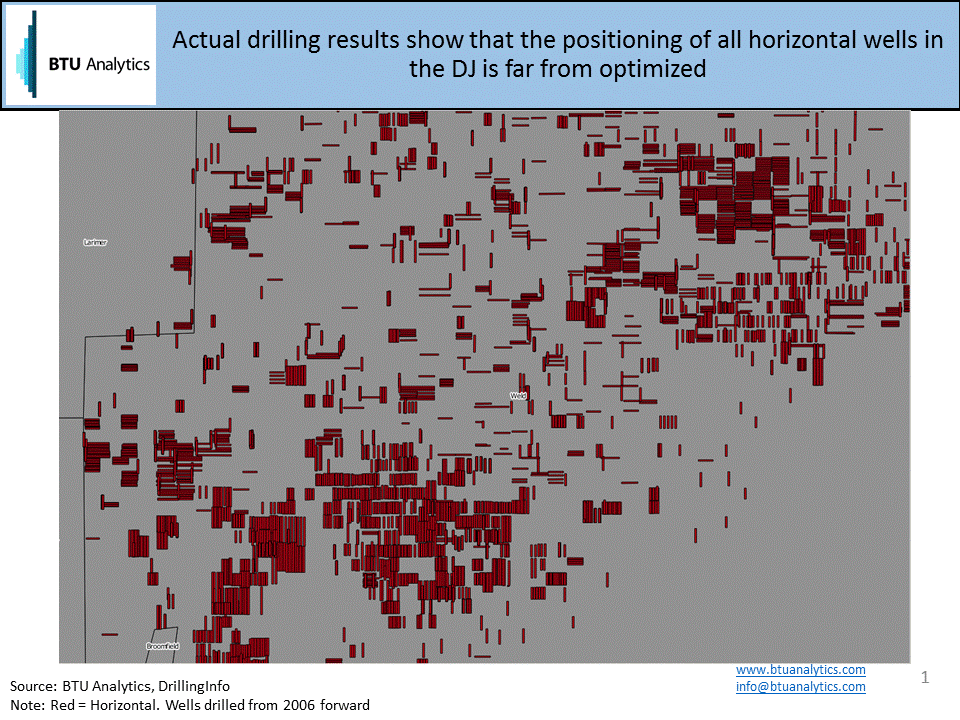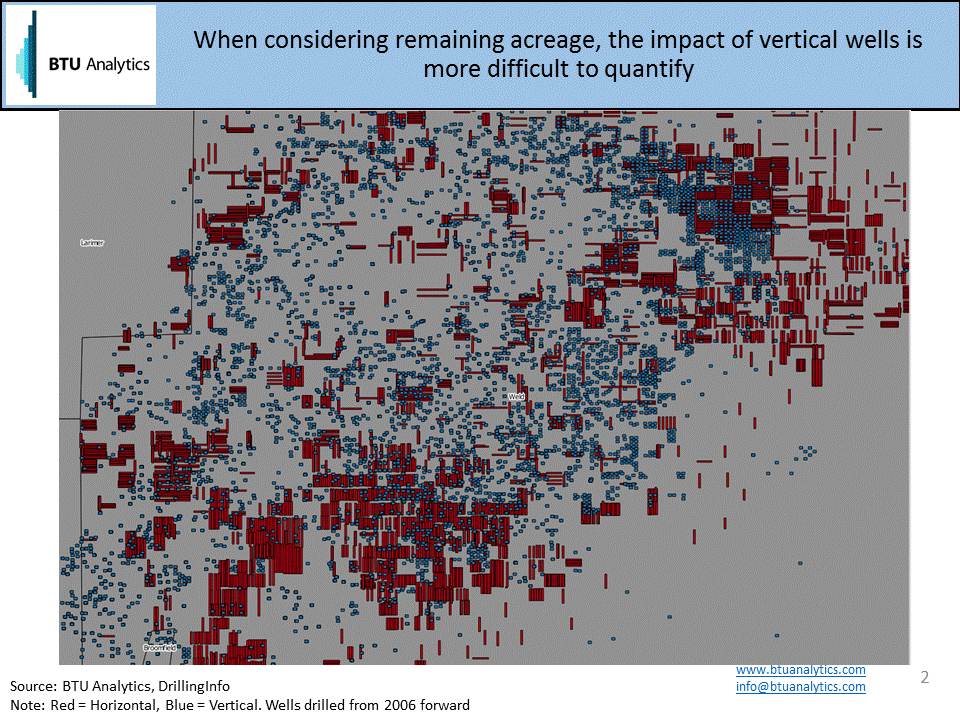How much longer can any US shale play sustain its rate of drilling, given core acreage is finite? BTU Analytics spends a significant amount of time investigating this question. Even slight changes in assumed drainage for an individual well (the acreage used up by a well, which effectively removes that acreage from the area of land that can be drilled) can lead to meaningful changes in inventory estimates, which then can lead to changes in how long today’s drilling pace can be sustained from a physical inventory perspective.
Consider this: if you were to assume all historical and future horizontal wells have been/are drilled in an optimized way (meaning wells are laid out in the most efficient way possible), DJ Basin drilling could be sustained for nearly 23 years at the current pace of activity. However, because this is the real world and horizontal drilling has not been/will likely not be optimized, a more accurate estimate of that is considerably different.

The above map shows the location of horizontal wells drilled in the DJ Basin. Some wells run north and south, others east and west. The spacing of historical well bores leaves gaps where no other wells can be filled in, and lateral lengths of wells differ across the region. Adjusting for this reality of where historical wells are, but assuming well locations are optimized in the future, drops the number of remaining years of inventory to 19 years. However, this estimate is still a bit off, since there hasn’t been consideration for the vertical wells that have been drilled in the area.

The above map shows the addition of vertical wells drilled since 2006 to the acreage. Hypothetically it makes sense that vertical wells should reduce the amount of acreage prospective for horizontal development. However, basin producers have downplayed the impact of previous vertical development. In light of this, BTU Analytics has drawn a line in the sand for the purpose of this blog and included only vertical wells from 2006 forward (this is necessary since assuming legacy vertical wells all had the same drainage would show that there is essentially no DJ inventory left), and using those numbers brings the inventory down further, from 19 years of remaining inventory to 17.5 years. The chart below summarizes the changes in locations based on each set of assumptions.

One thing to keep in mind is that not all of these locations are viable. These locations are based upon acreage delineated by horizontal wells, and we have not differentiated between acreage that is likely to breakeven at $30/WTI from acreage with breakeven at $100+. Stay tuned for a follow-up blog that touches on how the economics of the remaining inventory affects commodity prices. For more information on BTU Analytics’ location analysis, including our predictive economic grids, check out the E&P Positioning Report.








